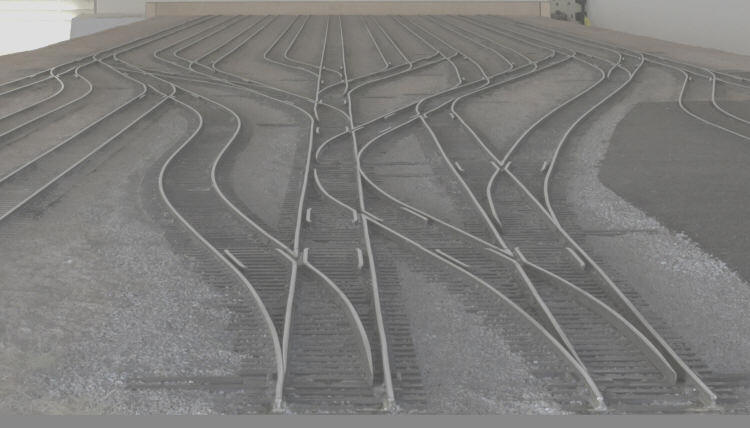What I’ve written in this handbook includes both
things I did and things I wish I had done when building my modules and
while participating in building the Northern California Free-mo group’s
new Mojave Yard. Since then, I've followed the construction
recommendations here on Bernal, West Fontana, and West Fontana
Extension. I’ve also incorporated comments made by other Free-mo
modelers as well. If you’ve never built a module or installed trackwork
before, following the recommendations presented here will result in
a great module and excellent trackwork.
Even the most beautiful locomotives, equipment
and scenery are no pleasure if trains don’t stay on the track or don’t
look great traveling along it. While prototypical modeling occasionally
results in models that simply aren’t suited to reliable operation, most
derailments and other operational and appearance issues can be traced to
avoidable workmanship and trackwork problems.
Remember that the Free-mo objective is to create
trackwork that is as prototypical, operates as well, and looks as good
as our best locomotives and rolling stock. This means that trackwork
needs to be treated as an important part of overall modeling work and
made as reliable and faithful to the prototype as are our most prized models.
After using all the tools available to check your work, sight across and along the module framework, roadbed, and track at rail top level. It's often surprising what is revealed when you do. You'll observe things that your tools may not have exposed. Dips, rises, twists, kinks, crooked track and turnouts, and all manner of other deviations from perfect cabinetry and trackwork will show up with surprising clarity. Do this frequently as you progress through all phases of building your module and your track. Here's an example of what I saw when sighting down one of the tracks on Mojave Yard.
